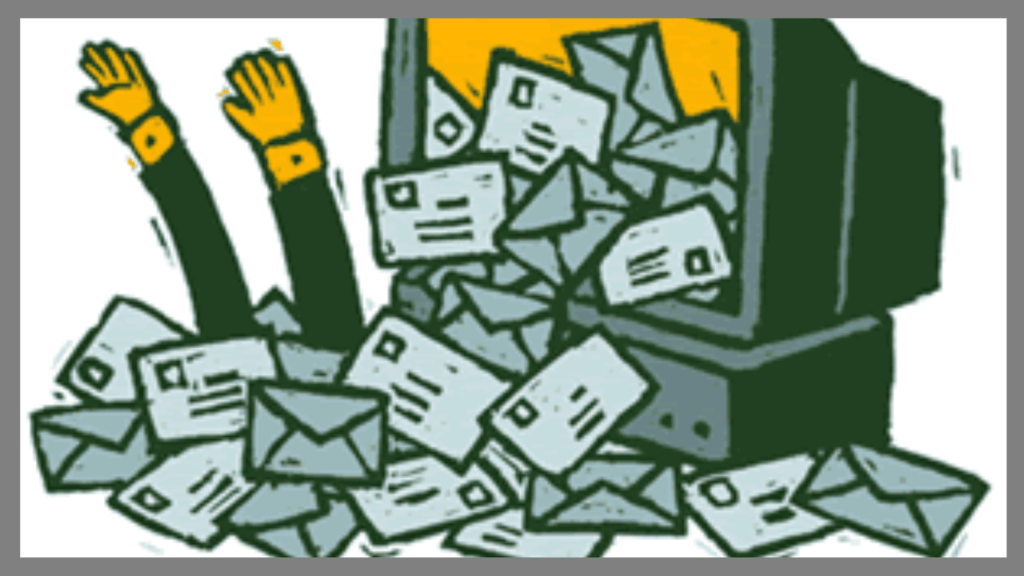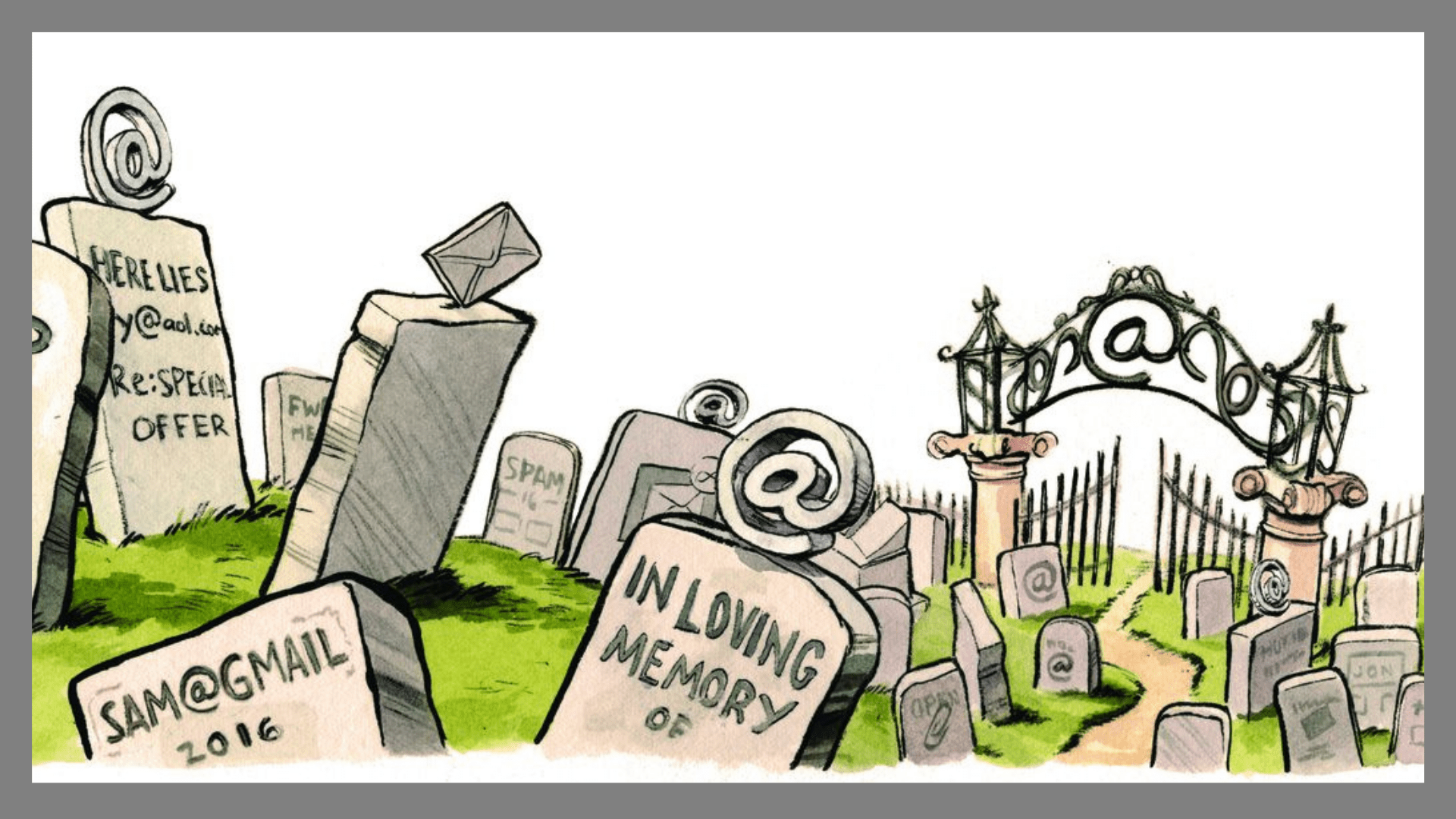The average email is opened and read for just 11 seconds. Businesses with little email marketing experience spend hours writing their email newsletters. They guess what their audience will like reading.
Most have no clue why their ROI and engagement numbers are worse than anticipated. For most of these companies, the reality is reflected by the average email open rate of 16.97%.
The frustration continues when they consistently get low engagement rates and unimpressive sales. It’s not surprising, therefore, that these companies believe that email newsletters are dead. But don’t be too quick to dismiss the email newsletter.
Consider this:
Every day, 333.2 billion emails are sent and received. By 2025, this figure will have increased to more than 375 billion. More than half the world’s population will be frequent email users by 2025. The ROI is incredible: for every $1 you invest in email marketing, you’ll get an average return of $42.
While email marketing is highly effective, the majority of businesses reap mediocre benefits from it. Most companies’ email newsletters are boring, not personalized, and do little to build relationships or create leads. Given that people are overwhelmed by the number of emails that hit their inbox daily, only organizations that have a clear email newsletter strategy record noteworthy success.
Why Email Newsletters Aren’t Dead
Email newsletters are not dead, but certain email marketing techniques are outdated and unhelpful. These include:
- Impersonal subject lines
- Poor email design
- Using non-mobile-friendly templates
- Lack of metrics
When it comes to customer acquisition and engagement, email newsletters are alive and well. After all, 99% of users check their emails daily, and 73% of millennials would rather receive an email from a brand that wants to send them marketing materials. These numbers make one thing clear: the problem rests not on the marketing channel but message delivery.
How Email Newsletters Differ from Email Drip Campaigns
Drip campaigns are a series of pre-written campaigns that guide email subscribers to a goal. They deliver long-term value to subscribers while also maintaining brand awareness. These emails “drip” useful information, products, or tips over days, weeks, or months.
On the other hand, an email newsletter is a type of email distributed to your complete mailing list regularly. Some businesses send newsletters every week (retail and eCommerce), while others send them out monthly or quarterly.
Newsletters frequently contain event news, industry news, and other information that your audience may find helpful. It’s all about consistency and building a relationship with your email list via a newsletter. In addition, newsletters include summaries of the content you’ve published, such as blog articles or videos.
As you can see, drip emails are more targeted than email newsletters in that they’re based on how individuals behave, whereas email newsletters are sent to the whole list of people who opted-in for updates. No wonder many brands struggle to get their newsletters open and read!
What to Share in Your Email Newsletter
A well-conducted email newsletter campaign should feature valuable content related to each stage of the buying cycle. But what exactly qualifies as “valuable” content?
Personalized content is crucial because it gives recipients something they will find valuable and informative while helping them understand why they need your product or service.
Here’s a breakdown of how different leads benefit from various kinds of content:
- Seeking More Information
People in the early stage of the buying cycle typically want to learn more about your industry and core topics. Most are still problem-aware: know they have a problem and are in search of solutions. They’ll appreciate content that’s educational and can be used as a reference, such as case studies, expert opinion, industry statistics, infographics, or videos.
- Closer to a Purchase. Weighing Options
The middle of the funnel (MOF) stage is about helping people make up their minds. Your email newsletter should feature different types of content—such as testimonials from users, awards you’ve won, comparison charts featuring your product vs. the competition’s—to create trust and increase loyalty among qualified leads.
- Customer Retention
Loyal customers appreciate a consistent presence from brands they already know and understand. You can keep them engaged with email newsletters that highlight recent activity such as blog posts, product updates, industry news, video content, or infographics—and always consider including a promotion to entice them into upgrading, renewing, or referring your brand.
- On the Fence
Timely deals are essential for giving prospects an incentive to purchase now rather than later. At this stage of the sales cycle, offers should be time-sensitive (e.g., “Ends in 3 days”) and not available all the time. Make sure you include the benefits of becoming your customer along with what sets you apart from your competitors.

How Often to Send Your Email Newsletter
Every email newsletter should have a specific goal in mind, but the best way to achieve it is by being consistent with timing and content.
There are no hard-and-fast rules about sending frequency, but available research shows that 61% of B2C and D2C subscribers and customers want promotional emails sent to their inbox once a week, 38% of which don’t mind if it was even more frequent.
That said, the B2B rule of thumb for most brands is once a month. But keep in mind these general guidelines when sending email newsletters:
- Resonate your brand style with your writing tone: B2C emails frequently employ a tone that is meant to pique the attention of their recipients. This tone may also be aesthetically appealing and entertaining. In contrast, B2B email marketing is more about developing connections and offering a trustworthy answer in a manner that the receiver would appreciate.
- Time it right: Timing is critical for B2B email marketing. While the best times for each audience and business are different, your analytics data can help you figure out when to send your email newsletter. Another aspect of timing is determining where your reader is in the buying cycle. This allows you to figure out the sort of follow-up emails that you should send. Someone who views a video or goes to a webinar is more than likely interested in that topic. Armed with this information, you can go ahead and send them follow-up emails and even phone calls with relevant products and services.
- Build authority: B2B newsletters are a fantastic way to share information and do market research. Share the most notable findings from your most recent case study. Make a customer poll or survey to engage your readers while obtaining critical data. This will assist you in increasing your brand authority and improving the value of your content. After you’ve gathered the data, publish the findings in your next e-mail newsletter. Your B2B consumers will undoubtedly appreciate relevant industry facts.
Tracking Engagement of Your Email Newsletter
In this congested, competitive inbox environment, tracking email engagement will provide you with the capacity to create and keep relationships. The primary purpose of sending email newsletters is to keep your brand top of mind until your leads are ready to move forward. To do this, you need a way to measure how engaged people are with the content that appears inside the email newsletter itself.
For example, you could use tools like Salesforce Marketing Cloud, MailChimp, HubSpot Email Marketing, Sendinblue, Klaviyo, or YMLP to track which recipients open individual emails and which don’t. This helps determine the kind of topics they prefer and which types of content they’re most likely to engage with (e.g., videos vs. infographics).
There are dozens of email engagement metrics to keep an eye on. Here are some of the most important:
- Subscribe and unsubscribe rates: show you the changing levels of interest in your company and its offerings. You learn what’s working and not working in your lead generation process.
- Open rate and unique open rate: show you the content subscribers prefer.
- Click-through rate: shows you which links in your newsletters are most compelling and how far readers go once they click on your links.
- Spam rate and complaint rate: are critical to filtering out subscribers who are not engaged with your content.
- Bounce rate: indicates if an email address is invalid and fails to deliver your messages. You need to know if your emails are landing at the correct destinations.
You can use all these metrics to make changes to your subject lines, calls-to-action, images, offers, and more—and ultimately help you understand how effective your email newsletter strategy is.
Email Newsletters - Best Practices
Email newsletters are a cost-effective medium to boost your conversions. Newsletters are imperative for fast-growing brands to take their business to the next level. A newsletter allows people to gain a better understanding of your business, as well as the specifics of your products and services. It can also provide your audience with a complete picture of who you are.
Yet, with all its promise, the email newsletter can fall flat against your expectations. Working with an experienced marketing agency that can help you align your sales and marketing strategies should eliminate these concerns. With publishers ramping up email production, customers have more options than ever before, making it more critical to develop unique content that meets specific audience demands.

